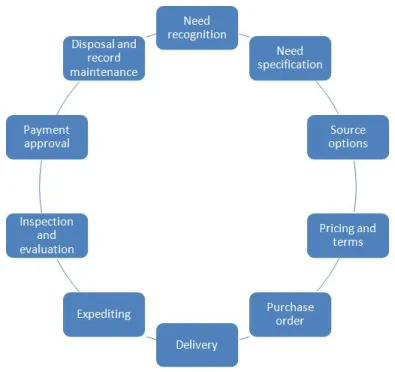Procurement vs. Purchasing: Strategies for Cost Optimization
- donnariekepro
- Jul 22, 2024
- 3 min read
In the business world, procurement and purchasing are often used interchangeably, but they involve different processes and strategies. Understanding the distinction between the two can help organizations optimize costs and enhance overall efficiency. This blog explores the key differences between procurement and purchasing and offers strategies for cost optimization in each area.
Understanding Procurement and Purchasing
Procurement is a strategic function that encompasses the entire process of acquiring goods and services. It includes identifying needs, sourcing suppliers, negotiating contracts, and managing relationships. Procurement aims to achieve long-term value for the organization, focusing on strategic aspects such as supplier performance and total cost of ownership.
Purchasing, on the other hand, is a subset of procurement. It involves the operational aspects of acquiring goods and services, such as placing orders, receiving deliveries, and processing invoices. Purchasing is more transactional and focused on ensuring that the right items are obtained at the right time and price.
Strategies for Cost Optimization in Procurement
Supplier Relationship Management (SRM): Building strong relationships with suppliers can lead to better terms and cost savings. SRM involves regular communication, performance reviews, and collaboration to drive improvements and negotiate better deals. Establishing partnerships can also result in more favorable pricing and terms.
Strategic Sourcing: This approach involves analyzing the organization's needs and the market to identify the best suppliers. Strategic sourcing focuses on finding suppliers that offer the best value, not just the lowest price. This may include considering factors such as quality, reliability, and total cost of ownership.
Category Management: Grouping similar products or services into categories allows for more effective negotiation and management. By consolidating purchases within categories, organizations can leverage their buying power to secure better pricing and terms.
Spend Analysis: Regularly analyzing spending patterns helps identify areas where cost savings can be achieved. By understanding where money is being spent, organizations can identify opportunities for consolidation, renegotiation, or alternative sourcing.
Technology Integration: Implementing procurement technology such as e-sourcing platforms, procurement management systems, and data analytics tools can streamline processes and provide valuable insights. These tools help automate tasks, improve accuracy, and facilitate better decision-making.
Strategies for Cost Optimization in Purchasing
Order Consolidation: Combining orders for similar items or from the same supplier can reduce shipping costs and take advantage of bulk discounts. Consolidation also helps streamline the purchasing process and reduces administrative overhead.
Vendor Management: Effective vendor management ensures that suppliers meet their contractual obligations and deliver value. Regularly reviewing supplier performance and addressing any issues can help prevent cost overruns and maintain quality standards.
Inventory Management: Maintaining optimal inventory levels is crucial for cost control. Overstocking can tie up capital and increase storage costs, while understocking can lead to stockouts and lost sales. Implementing inventory management systems can help balance these factors and optimize purchasing decisions.
Contract Management: Ensuring that contracts are well-negotiated and clearly defined helps prevent misunderstandings and disputes. Regularly reviewing and renewing contracts can also provide opportunities to renegotiate terms and secure better pricing.
Process Efficiency: Streamlining purchasing processes, such as order approvals and payment procedures, can reduce administrative costs and improve turnaround times. Implementing standard operating procedures and utilizing technology can enhance efficiency and accuracy.
Conclusion
Both procurement and purchasing play critical roles in cost optimization, but they focus on different aspects of the acquisition process. By adopting strategic approaches to procurement and operational efficiencies in purchasing, organizations can achieve significant cost savings and improve their overall procurement performance. Understanding the differences between procurement and purchasing and implementing the right strategies can lead to better value, enhanced supplier relationships, and more efficient processes. SITES WE SUPPORT
SOCIAL LINKS




Comments